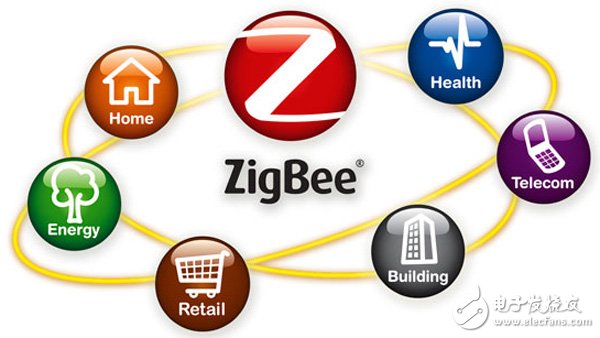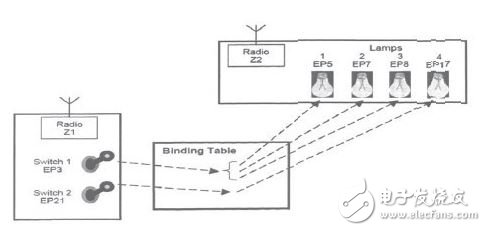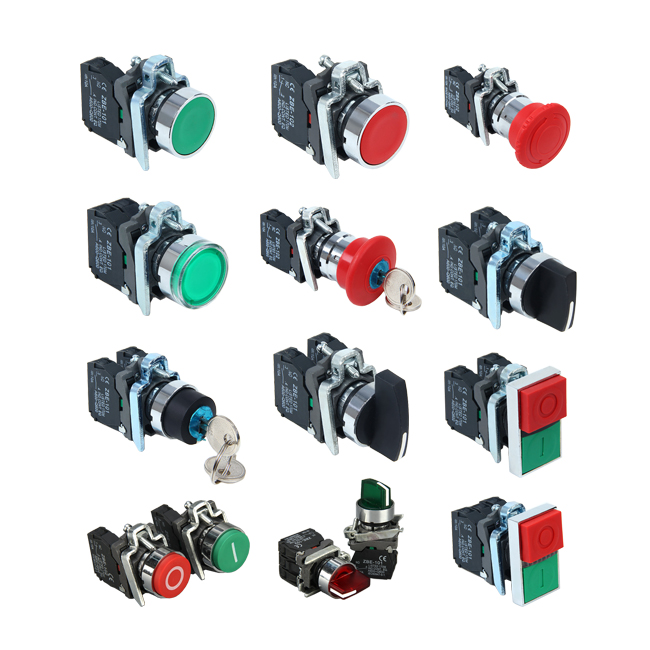
When learning the zigbee protocol stack, I often see zigbee terms such as applications, zigbee device objects (ZDOs), nodes, devices, endpoints, clusters, attributes, bindings, addressing, etc. I don't know what these zigbee terms mean. How to define, how to distinguish, how to divide and what is the relationship between them, everything is not known. There are also many explanations of the zigbee terminology on the Internet. I don't know if there is a problem with my understanding ability, or is it difficult to understand itself, too abstract?
First, the attribute
The attribute Attribute is a data value reflecting the physical quantity or state, such as the switch value (On/Off), the state value of the lamp (On/Off), the temperature value, the percentage, etc.
Second, cluster, or cluster
A cluster cluster is a cluster that contains one or more attributes. Simply put, a cluster is a collection of attributes. Each cluster is assigned a unique cluster ID and each cluster has a maximum of 65536 attributes. For example, a cluster contains switches in different situations, lights in different situations, temperature values ​​in different situations, percentages in different situations, etc.
Third, the device description
Device Description Device DescripTIon is a part of a large target application, including one or more clusters.
Fourth, the endpoint
The endpoint EndPoint is the entry point of the protocol stack application layer, that is, the entry address. It can also understand where the application object (ApplicaTIon Object) exists. It is a group of clusters defined to implement a device description. Each Zigbee device can support up to 240 such endpoints. Port 0 is used for the configuration and management of the entire Zigbee device. Applications can communicate with other layers of the Zigbee stack through Endpoint 0 to initialize and configure these layers. The object attached to endpoint 0 is called the Zigbee Device Object (ZDO). Endpoint 255 is used for broadcast to all endpoints, and endpoints 241-254 are reserved endpoints.
Fifth, the configuration file
A profile profile can be understood as a collection of multiple device description items that collectively facilitate an interactive application. The attribute ID and cluster (cluster) ID are defined to make it look like a certain feature of the device. Taking the home intelligent control system as an example, the cluster configuration file The OnOffDRC of the remote control device has an attribute OnOff, and This attribute is an unsigned 8-bit value, a value of 0xFF means "on", 0x00 is "off", and 0xF0 is invalid. Typically, configuration files are also defined for devices, which clusters are mandatory and which are optional. In addition, the configuration file also defines some optional zigbee protocol hosting services. Each application corresponds to a profile, which includes: Device ID, Cluster ID, Attribute ID, and the type of service used by the AF (Application Framework). information. In the zigbee protocol, up to 2^16 devices, 2^8 clusters are allowed in one configuration file, and each cluster supports up to 2^16 attributes.
Six, node
A Node Node can also be understood as a container containing a set of zigbee devices sharing a wireless channel. Each node has one and only one wireless channel. In addition to a 64-bit IEEE address and a 16-bit network address, each node also provides an 8-bit application layer entry address (endpoint: EndPoint), which corresponds to the user application object.

Node one Z1: switch control device
Node two Z2: lamp device
Event: Switch 2 controls the lighting of the lamp 4, and the switch 1 controls the lighting of the lamp group 1~3.
Cluster: The status of the switch and the status of the lamp under different conditions
EndPoint: switches and lights
Attribute: Switches and lights have two attributes: on and off.
Seven, binding (Bindling)
Zigbee defines a special process called endpoint binding. Binding creates a logical link between an endpoint of the source node (EndPoint) and an endpoint of the target node. Binding can occur between two or more devices. The coordinator node maintains a binding table that basically includes logical links between two or more endpoints.
In the binding table, the following information, the IEEE address, the endpoint number, and the cluster number of the source node and the target node are included. For two nodes that can establish a binding relationship, the attributes of their cluster must have one choice "input" and the other select "output", and the cluster numbers must be equal, so that they can establish bindings with each other. If the target device's extended address is known, the zb_BindDeviceRequest() function can be called to create a binding entry.
Eight, addressing (Addressing)
In the Zigbee network, two types of addresses are used: one is a 64-bit IEEE address, also called a physical address, and the 64-bit address is unique among all zigbee devices, including one IEEE-assigned, globally unique 24-bit. Manufacturer-specific organization identifier OUI (OrganizaTIonally Uqique IdenTIfier). The other is a 16-bit network address (NWK Address). When a device joins a zigbee network, it obtains a 16-bit network address from the parent device that it is allowed to join. This address is unique in the zigbee network for data transmission and packet routing. In zigbee, packets can be unicast, multicast, or broadcast, so there must be address mode parameters. A unicast packet is sent to only one device, a multicast packet is transmitted to a group of devices, and broadcast data is sent to all nodes of the entire network. Group Addrsing can also be used when an application needs to send a packet to a group of devices on the network.
XB4 series Pushbutton Switch are used in industrial for controlling circuits of AC50Hz or 60Hz,rated operation voltage 380V or below and DC operational Voltage 220V or below for controlling in magnetic starter, contactor,relay and other electrical circuits. The buttons indicators can also be used in the place with indicated light or signal. They meet with the standards: IEC 60947-5-1.
XB4 Series Metal Pushbutton Switch is the new design in the field of Push Button Switch. Which with stronger metal plate and very easy to be installed.

XB4 Series Pushbtton Switch,Push Button Power Switch,Mini Push Button Switch,Push Button Lamp Switch
Ningbo Bond Industrial Electric Co., Ltd. , https://www.bondelectro.com